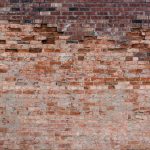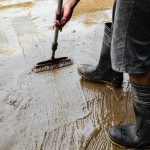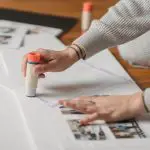Wondering if contact cement is the ultimate adhesive for fabric? Consider this: just as a master painter chooses the finest brushes for a masterpiece, a seasoned fabricator selects the best adhesive.
Contact cement offers exceptional bonding strength and versatility for a variety of fabric projects. Its ability to create durable, long-lasting bonds makes it a top choice for professionals seeking precision and reliability.
In this guide, we'll explore the advantages, limitations, and best practices of using contact cement on fabric, providing you with the expertise needed to make an informed decision for your next project.
Key Takeaways
- Contact cement provides a strong and durable bond for fabric.
- It is easy to apply and is suitable for a variety of fabric projects.
- Contact cement maintains the natural drape and movement of fabric.
- However, it may not be compatible with all fabric textures and can be susceptible to heat and moisture.
Understanding Contact Cement
Understanding how contact cement works is essential for achieving strong and durable fabric adhesion in your projects. Contact cement is a type of adhesive that forms a strong bond when the two adhesive-coated surfaces come into contact with each other. This adhesive is commonly used for bonding laminates, veneers, and other materials, but it's also effective for fabric adhesion when applied correctly.
When using contact cement for fabric adhesion, it's crucial to understand the proper application techniques. First, ensure that the fabric is thoroughly prepared by removing any dirt, dust, or debris. Then, apply a thin, even coat of contact cement to both the fabric and the surface it will adhere to. Allow the adhesive to dry until it becomes tacky to the touch before bringing the two surfaces together.
While contact cement is a popular choice for fabric adhesion, it's essential to note that there are alternative adhesives available, such as fabric glue and spray adhesives, which may be better suited for certain projects. Understanding the drying time and fabric preparation techniques associated with contact cement can help you determine if it's the best adhesive for your specific fabric adhesion needs.
Advantages of Contact Cement for Fabric
Contact cement offers a strong and durable bond, ensuring that your fabric stays in place for the long term.
Its easy application process makes it convenient for a variety of fabric projects, saving you time and effort.
Additionally, its effectiveness on large surfaces makes it a practical choice for larger fabric applications.
Strong, Durable Bond
When using contact cement for fabric, you'll appreciate its ability to create a strong and durable bond that withstands the rigors of use. This adhesive offers several advantages in terms of fabric adhesion and bond strength:
- Fabric Adhesion
Contact cement forms an incredibly strong and lasting bond with fabric, ensuring that the material stays firmly in place even under stress. It provides excellent adhesion to a wide variety of fabrics, including canvas, leather, and vinyl.
- Bond Strength
The bond created by contact cement isn't only strong but also flexible, allowing the fabric to maintain its natural drape and movement without compromising durability. This adhesive's exceptional bond strength makes it ideal for applications where a reliable and long-lasting fabric bond is crucial.
Easy Application Process
For easy application of contact cement to fabric, follow these steps to ensure a smooth and efficient bonding process.
- Start by preparing the fabric and work area, ensuring they're clean and free from any debris.
- Apply a thin, even layer of contact cement to both the fabric and the surface it will be adhered to using a brush or roller.
- Allow the adhesive to become tacky before carefully bringing the two surfaces together, ensuring proper alignment.
- Use a roller to firmly press the fabric onto the surface, ensuring a strong bond.
- Clean any excess adhesive with a solvent if needed.
These application techniques make contact cement a preferred choice for fabric bonding compared to alternative adhesives due to its ease of use and reliability.
Great for Large Surfaces
If you're working with large fabric surfaces, contact cement offers the advantage of providing a strong and durable bond that's ideal for such projects. This adhesive is well-suited for large projects due to its ability to create a long-lasting and reliable bond between fabric and other surfaces.
Additionally, the alternatives for adhesives on large surfaces may not offer the same level of durability and strength as contact cement. When considering fabric adhesion, contact cement is a top choice for large projects due to its ability to withstand the stress and strain that often occurs with frequent use or manipulation of the fabric.
Its application techniques are also well-suited for large surfaces, allowing for an even and consistent application to ensure a secure bond throughout the entire fabric area.
Limitations of Contact Cement for Fabric
When considering the limitations of using contact cement for fabric, it's important to take into account the compatibility of the adhesive with different fabric textures.
Additionally, the effects of heat and moisture on the adhesive's performance should be carefully evaluated, as these factors can impact the durability of the bond over time.
Understanding the long-term durability of contact cement when used with fabric is crucial for making informed decisions about its suitability for specific projects.
Fabric Texture Compatibility
Fabric texture influences how well contact cement adheres to the material. When considering fabric texture compatibility with contact cement, it's essential to take into account the following factors:
- Fabric Care:
- Delicate or high-maintenance fabrics may not be suitable for contact cement, as the application process could potentially damage the material.
- Fabrics that require special care, such as dry cleaning only, may not be compatible with contact cement, as the adhesive may not withstand the cleaning process.
It's important to note that in cases where contact cement may not be the ideal choice due to fabric texture compatibility, alternative adhesives such as fabric glue or fusible webbing can offer more suitable options for securing fabrics together.
Heat and Moisture
Considerable caution should be exercised when utilizing contact cement for fabric bonding due to its susceptibility to heat and moisture.
The effect of heat on contact cement can significantly impact its adhesive strength. High temperatures can cause the adhesive to soften and weaken, leading to potential failure of the bond.
Additionally, moisture can also compromise the adhesive strength of contact cement when used for fabric. Excessive moisture exposure can result in the deterioration of the adhesive, causing it to lose its bonding properties.
It's important to carefully consider the environmental conditions and potential exposure to heat and moisture when using contact cement for fabric applications. Taking proactive measures to protect the bonded fabric from extreme heat and moisture can help maintain the integrity of the adhesive bond.
Long-Term Durability
For long-term durability in fabric bonding, it's important to be mindful of the limitations of using contact cement as an adhesive. Contact cement may not hold up as well over time compared to other adhesives. Some limitations to be aware of include:
- Limited Fabric Flexibility: Contact cement can become brittle over time, causing it to crack and lose its bond with the fabric. This lack of flexibility can lead to the adhesive breaking down, especially in areas of the fabric that experience frequent movement or stretching.
When aiming for a lasting fabric bond, it's crucial to consider the potential long-term issues with contact cement's ability to maintain flexibility and durability.
Comparing Contact Cement to Other Fabric Adhesives
When choosing an adhesive for fabric, you should compare contact cement to other options available on the market. Comparing adhesion methods and fabric bonding techniques is crucial in determining the most suitable adhesive for your specific project.
Contact cement is known for its strong bond and versatility, making it a popular choice for fabric adhesion. However, there are other fabric adhesives worth considering. Fabric glue, for instance, provides a no-sew alternative and is often machine washable, making it suitable for a wide range of fabric types.
Fusible web, on the other hand, is an adhesive web that can be ironed onto fabric, creating a bond that's activated by heat. It's commonly used for hemming, patching, and appliqué work.
Another option is spray adhesive, which offers a temporary bond and is particularly useful for positioning fabric before sewing.
Each adhesive has its own strengths and limitations, so it's essential to evaluate them based on the specific requirements of your project.
Tips for Using Contact Cement on Fabric
To achieve optimal results when using contact cement on fabric, carefully consider the specific requirements of your project and follow these essential tips for successful adhesion:
- Application Techniques
- Apply a thin, even coat of contact cement to both the fabric and the surface it will adhere to. Use a brush or roller for smooth and consistent coverage.
- Fabric Preparation
- Ensure that the fabric is clean, dry, and free from any residues such as lint or sizing. Pre-washing and ironing the fabric can improve adhesion.
When using contact cement on fabric, it's crucial to pay attention to surface compatibility. Some fabrics and surfaces may not bond well with contact cement, in which case exploring alternative adhesives like fabric glue or spray adhesives could be beneficial.
Common Misconceptions About Contact Cement
Many people mistakenly believe that contact cement can only be used for rigid materials, but in reality, it can also effectively bond various types of fabric.
One common misconception about contact cement is that it isn't suitable for flexible materials like fabric. However, when used correctly, contact cement can provide a strong and durable bond for fabric.
Another misconception is that contact cement can only be applied in large, continuous areas. In fact, it can be applied in small, precise areas with the proper usage and application techniques.
Additionally, some may believe that contact cement isn't suitable for delicate fabrics due to its strong bond. While it's important to use caution with delicate fabrics, contact cement can still be used effectively with proper application and care.
Understanding the fabric flexibility and the proper usage of contact cement can help dispel these misconceptions, allowing for the successful bonding of various types of fabric.
Best Practices for Applying Contact Cement to Fabric
For applying contact cement to fabric, ensure that you thoroughly clean the surfaces to be bonded for optimal adhesion. Fabric preparation is crucial for successful adhesion when using contact cement. Here are the best practices to follow for applying contact cement to fabric:
- Fabric Preparation
- Clean the fabric surfaces with a mild detergent and water to remove any dirt, oils, or residues that could hinder adhesion.
- Allow the fabric to dry completely before applying the contact cement to ensure a strong bond.
- Application Techniques
- Apply a thin, even coat of contact cement to both the fabric and the substrate using a brush or roller for uniform coverage.
- Press the fabric and substrate together firmly, ensuring there are no air bubbles or wrinkles, and apply consistent pressure for proper adhesion.
When considering compatibility with different fabric types and materials, it's essential to test the contact cement on a small, inconspicuous area of the fabric to ensure compatibility and adhesion.
Following these best practices will help you achieve a strong and durable bond when using contact cement with fabric.
Frequently Asked Questions
Is Contact Cement Safe to Use on All Types of Fabric, Including Delicate or Stretchy Materials?
When using contact cement on fabric, ensure safe application for delicate or stretchy materials. Consider extreme conditions, drying time, and safety measures. Mistake removal may be challenging, so take ventilation precautions.
Can Contact Cement Be Used on Outdoor Fabric or Fabrics That Will Be Exposed to Extreme Temperatures or Moisture?
For outdoor fabric and extreme temperatures, contact cement can provide strong fabric adhesion. However, moisture exposure may weaken its effectiveness over time. Consider alternative adhesives specifically designed for moisture resistance in these conditions for optimal results.
How Long Does Contact Cement Typically Take to Dry When Used on Fabric, and Are There Any Special Considerations for Drying Time?
Typically, contact cement takes about 15 minutes to dry when used on fabric. It's important to apply a thin, even layer and allow proper drying time. Precautions include ensuring good ventilation and avoiding contact with skin or eyes during the application process.
Are There Any Specific Precautions or Safety Measures to Take When Using Contact Cement on Fabric, Such as Ventilation or Protective Gear?
When using contact cement on fabric, it's crucial to take specific precautions. Ensure proper ventilation to avoid inhaling fumes, and wear protective gear like gloves and a mask. These safety measures are essential for your well-being.
Can Contact Cement Be Removed From Fabric if a Mistake Is Made During the Application Process?
To remove contact cement from fabric, use a solvent like acetone or mineral spirits. Prevent mistakes by carefully applying the cement and using a small amount. Ventilate the area and wear protective gear.
- Tetron Fabric for Marine Applications: Durability and Use Cases - June 18, 2025
- Tetron Fabric for Outdoor Furniture: Weather Resistance and Care - June 18, 2025
- Tetron Fabric for Wall Coverings: Style and Application Tips - June 18, 2025







